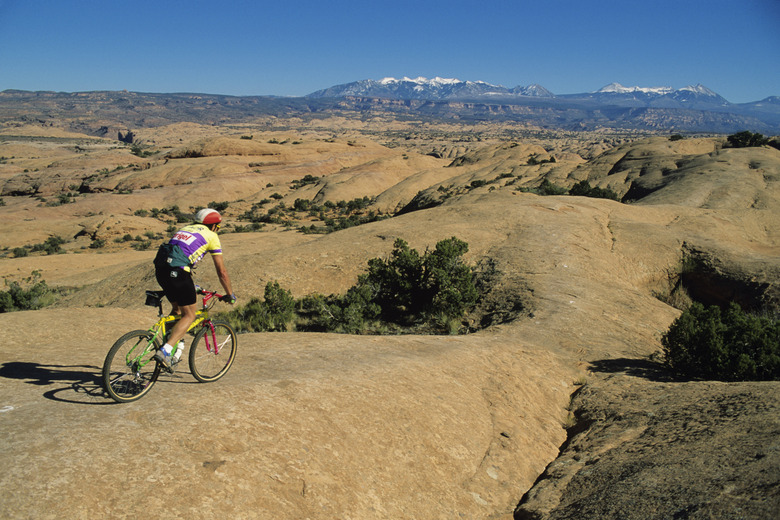Facts About Plants In The Desert
Some people believe deserts are the harsh wastelands where plant, human and animal life can't possibly survive. But contrary to popular belief, some incredible adaptations make it possible for resilient plants to thrive even in the hostile conditions of the desert.
Battling the Elements
Battling the Elements
Desert vegetation has to be able to withstand the harsh and unpredictable climate of the desert. One of the toughest conditions to overcome is the temperature. Many people think of the desert as unbearably hot, and that is often true during the day. But at night, temperatures can also dip to dangerous lows. That means a plant must be able to withstand temperature extremes, something that their plant counterparts in more temperate conditions are unable to do.
Plants in the desert also have to be able to survive with very little water. Some, the phreatophytes, do so by growing long roots that collect water from deep underground. Others survive by remaining dormant during the driest parts of the year, but then coming to life to collect water when rains finally arrive. Another variety of vegetation, the xerophytes, have adapted their body structures to be able to thrive with low water supply. Their lack of leaves, waxy surfaces and ability to store and conserve large amounts of water within themselves help them to survive even the driest of conditions.
Desert Cactus Adaptations
Desert Cactus Adaptations
One of the most recognizable plants found in the desert is the cactus. There are several different types of cacti, but most are known for their thorny exterior. Those thorns play several roles in the survival of a cactus. First, they're a line of defense against predators who don't want to get poked. They can also, despite seeming small, help provide a layer of shade for the plant under the hot desert sun, or serve as camouflage. If heavy rainfall occurs, long thorns help to absorb those drops, which then fall to the ground directly beneath them so that the cactus roots can then soak up that moisture for future use.
But desert cactus plants aren't just known for their thorns. Flowers can often bloom on cacti, especially after torrential rains during the early spring months. The phenomenon gives the desert a gorgeous color and vibrancy that the landscape sometimes lacks. Some of the most famous California desert flowers include the pretty purple notch-leaf phacelia of Death Valley, or the prickly poppy that is also referred to as the cowboy's fried egg, thanks to its delicate white petals and yolk-like yellow center.
If you see a cactus flower, it's best to enjoy the sight of it from afar. Like thorns, flowers are another cactus ornament meant to protect the plant. Many are harmless, but others contain toxins that could irritate your skin or eyes.
Landscaping Plants for the Desert Home
Landscaping Plants for the Desert Home
Many people are interested in using plants that survive in the desert to decorate their own backyard. Thankfully, there are many desert plants that look great and are easy to care for that can thrive in a backyard environment.
The green rosette shapes of ghost plants add character to a home landscaping job and require little maintenance. Also popular is the flaming Katy, a succulent that brings pops of vibrant color to a garden when it blooms. Many gardeners also like the peaceful blades of the Mexican feather grass plant. Additionally, not only does aloe vera make a striking a garden addition, it can also be used as a natural home remedy for conditions like sunburn.
Whether you're visiting a faraway desert or relaxing in one in the comfort of your backyard, there are always interesting facts to be learned about the desert plants surrounding you.
Cite This Article
MLA
Dragani, Rachelle. "Facts About Plants In The Desert" sciencing.com, https://www.sciencing.com/plants-desert-5779434/. 8 August 2018.
APA
Dragani, Rachelle. (2018, August 8). Facts About Plants In The Desert. sciencing.com. Retrieved from https://www.sciencing.com/plants-desert-5779434/
Chicago
Dragani, Rachelle. Facts About Plants In The Desert last modified March 24, 2022. https://www.sciencing.com/plants-desert-5779434/
